A Student Sharing Her Experience of Compassionate Citizenship Program
Impact of Compassionate Citizenship Program on the Perspective and Social Commitment of a Student
A Teacher on the Impact of Project Works on the Perspectives of Students
Understanding Gained about Different Forms of Violence at Sambandh
Understanding Child Labor through Project Work
COVA- ICAN
Compassionate Citizenship and Responsible Activism Program
For School and College Students
Media Reports
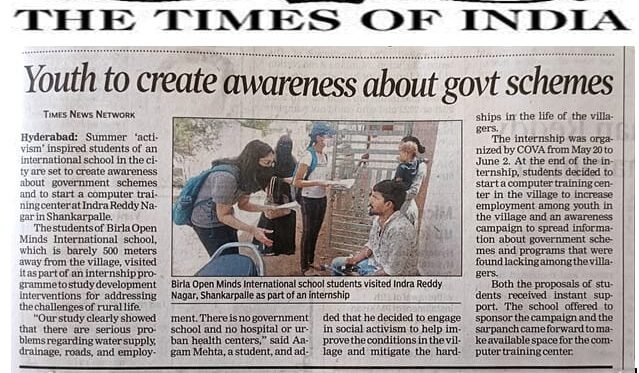
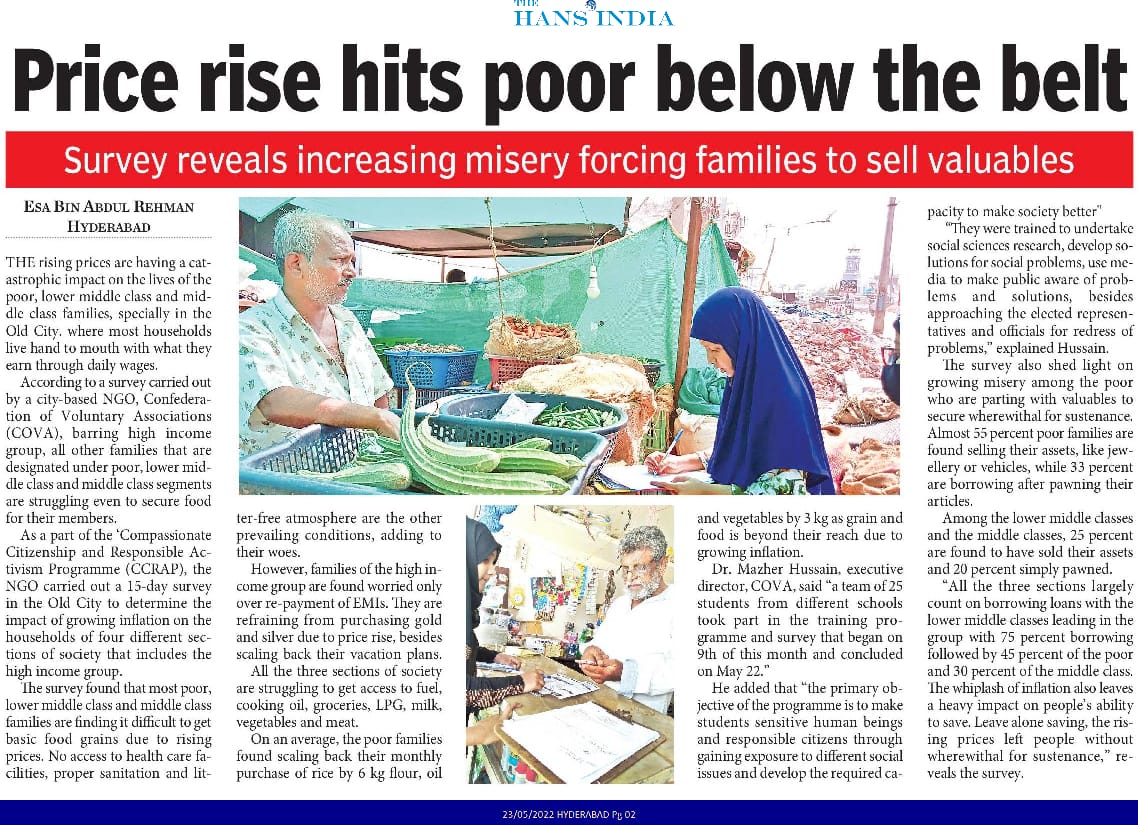
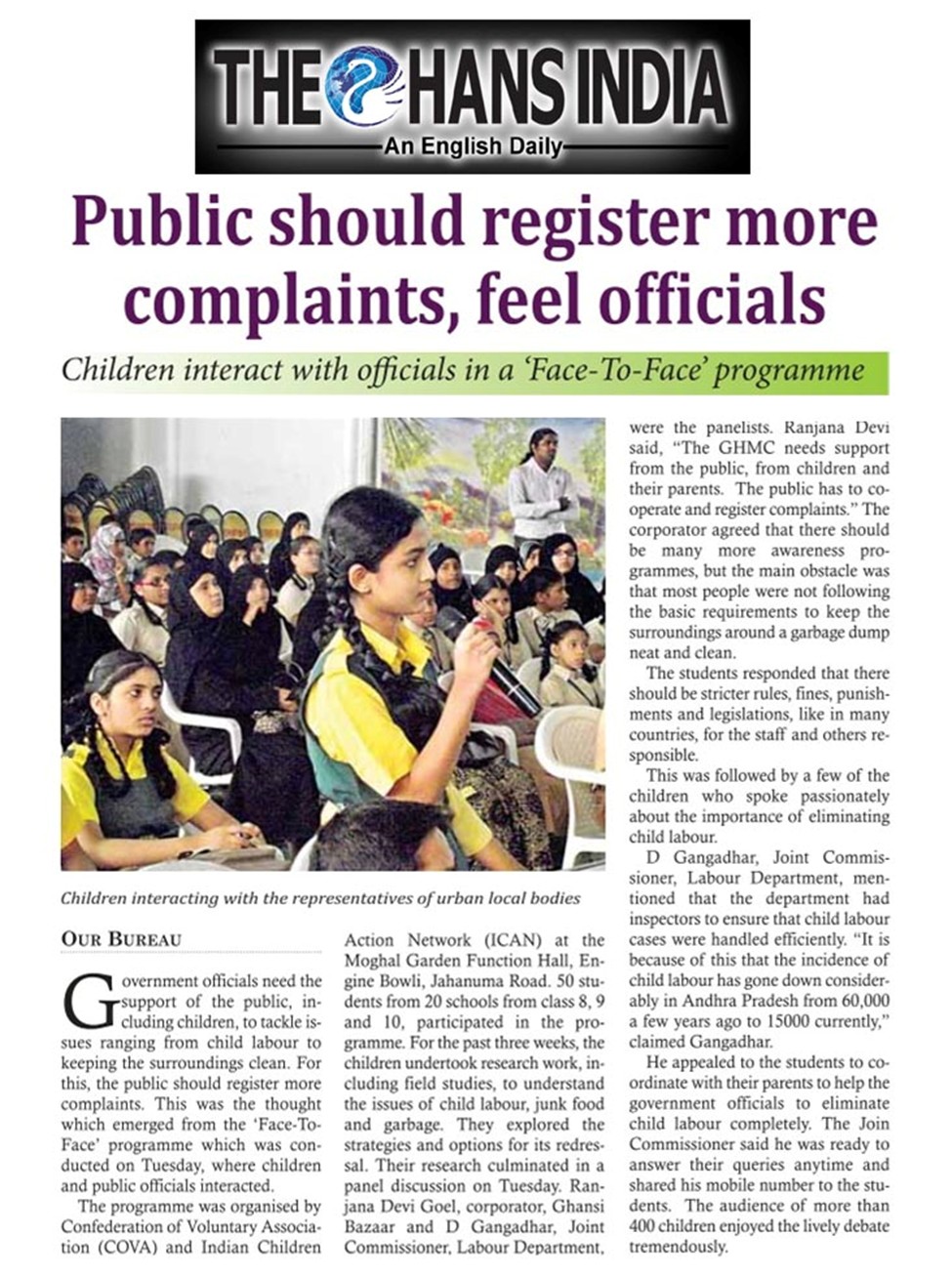
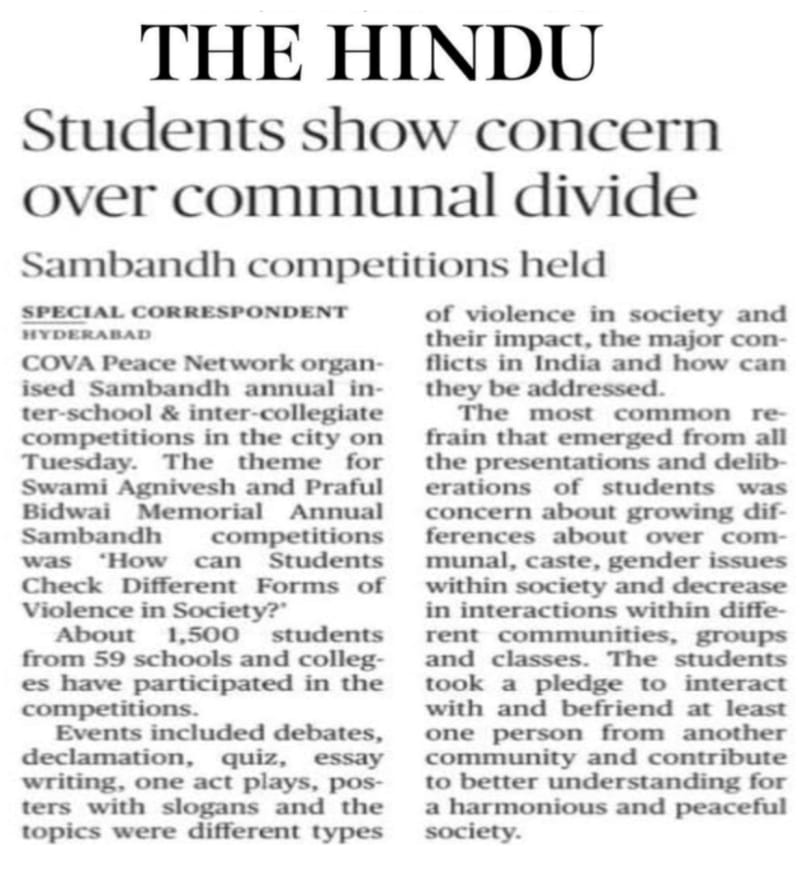
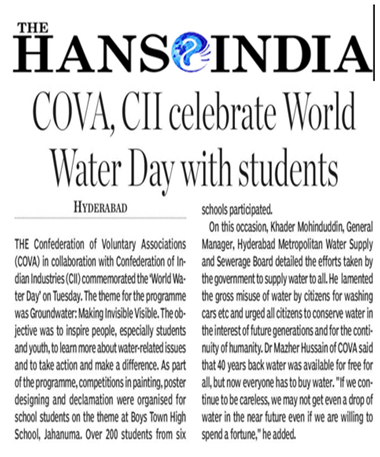
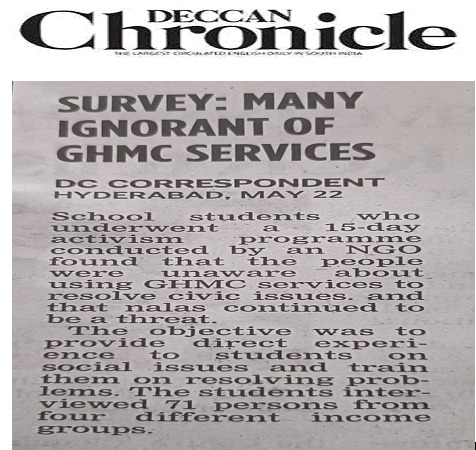
HYDERABAD: JUNE 11, 2013 00:00 IST
Student activism: It gets GHMC going
If you are inspired and committed, you can do a lot. This was proved by a group of student activists who made the GHMC set right the dysfunctional clock atop the Mahbub Chowk. What the students did was to dash off representations to the civic body which forced it to repair the clock which had stopped functioning.
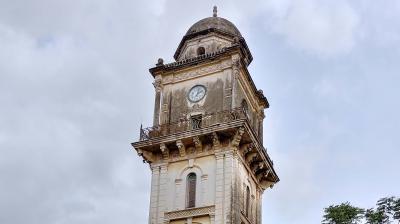 Heritage protection- The GHMC also ordered an enquiry into the excess charges collected at parking lots and agreed to put up boards displaying the approved parking fee. The students also convinced a local channel to telecast messages and run scrolls on water conservation and other social issues. The student activists plan to get government support and corporate sponsorships for restoration and protection of heritage buildings in Hyderabad and strive for the establishment of Hyderabad Culture Museum at Khurshid Jah Dewdi. All this is the result of a month-long activism program conducted by COVA and ICAN on various social issues. A theatre training workshop was also organized by the Koshish Theatre Group, a COVA affiliate, wherein 50 students participated.
Heritage protection- The GHMC also ordered an enquiry into the excess charges collected at parking lots and agreed to put up boards displaying the approved parking fee. The students also convinced a local channel to telecast messages and run scrolls on water conservation and other social issues. The student activists plan to get government support and corporate sponsorships for restoration and protection of heritage buildings in Hyderabad and strive for the establishment of Hyderabad Culture Museum at Khurshid Jah Dewdi. All this is the result of a month-long activism program conducted by COVA and ICAN on various social issues. A theatre training workshop was also organized by the Koshish Theatre Group, a COVA affiliate, wherein 50 students participated.
FEBRUARY 27, 2012 18:07 IST
Young activists in action
The COVA-ICAN exhibition was aimed at developing social activism and the topics ranged from child labour, environment to issues affecting the Government schools. For students of city schools, meeting with children working in automobile workshops, general stores and selling bangles on pushcarts in Charminar sensitised them on the worrisome issue. Equipped with the draft of NCLP, they questioned the child labour rehabilitation project officer.
Field work
“We spoke to a child working in a shop in Khilwat. His father was killed in an accident and there was no one to feed his extended family. So he left school to take care of them,” says Syed Azimuddin, a Std. VIII student.
“The shopkeepers were rude to us when we questioned them about employing children,” adds his team mate Syed Abdul Raza, sharing their field report with other school children visiting the COVA-ICAN exhibition.
Social activism
The event was aimed at developing social activism among students of schools in old city. The topics in focus ranged from child labour, environment to issues ailing the Government schools. It was after meeting Schoolchildren of Government schools and visiting the schools in Rein Bazaar, Imam Bada and Edi Bazaar that the students presented the problems haunting the Government schools, namely appalling student-teacher ratio, lack of drinking water facility and unsafe buildings.
How healthy?
Children of Yakutpura recorded the health hazards affecting their locality. They shared the footage over the laptop – unhygienic conditions abutting the nala flowing through Dabeerpura, Yakutpura and Talab Katta, and the garbage dump near the TB Hospital. “How can garbage be dumped near a health centre?” questions Abdul Basith, a Std. VII student of Imam Baksh Memorial High School.
As for the nala, he says that a road build over the long nala can decongest the traffic in the narrow lanes here.
The exhibition definitely found the young activists come up with out of the box solutions.
Abdul Basith Std.VII, Imam Baksh Memorial High School: “We recorded the land and water pollution in the nala at Yakutpura. A road built over the long nala can be a deterrent for people to dump wastes and serve as a walkway or road for people.
Sumeina Kausar, Std. IX, Rainbow High School: Government schools were established by the State to meet education needs. What we found was lack of infrastructure, mid-day meal and teachers.
Hafsa,Std. IX, Crown International School: Our project was on pollution. Air pollution is the cause for breathing problems. One is witnessing global warming. Acid rain results in damage to monuments.
Unisha Mirza,Std. IX, Lords Model School: We focused on the impact of pollution. Sound pollution can have a negative impact on health. Likewise, alarming deforestation and water pollution can have a dangerous impact on our lives.
TIMES NEWS NETWORK
Students get into social activism
Hyderabad: Social activism in schools of Old City is fast catching pace with students not only joining hands in awareness issues but also finding solutions for them. These students are studying doing research and preparing projects on issues pertaining to the society.
Almost 100 schools in the city in association with COVA and India Children’s Network (ICAN) are motivating students to undertake activism to solve social problems as socially-conscious and responsible citizens.
Mohammed Turab, executive secretary of COVA, said: “ The objective of such social activism projects is to make them independent in not only identifying the problem but also in solving them, Students chose issues such as traffic management, speed driving, citizens charter, etc, for their project and work towards getting a solution for the same. We have identified student representatives from all schools who later presented their project work to the government officials concerned.”
Take for instance, Azmath Unnisa,a class VIII student of Imam Baksh Memorial High School, who did a project on speed driving, “Since I was not aware about the topic, I met several trafic policemen to figure out that there is a sensor in each bike that buzzes when the speed is too high. This sensor is used only in New Delhi as of now.”
It is only after working on this project that Azmath realized that if this sensor is used in Hyderabad as well, many accidents can be avoided. Azmath’s father Abdul Rahman said: “These projects act as a platform for students to raise the issues to the officials concerned. Through these projects, our student representatives meet several senior government officials and discuss the issues with them.”
Social activism is performed through a structured methodology in all schools. Bal Adalat, a question-answer session between students and various noteworthy speakers of society, would soon be conducted to make students even more active.
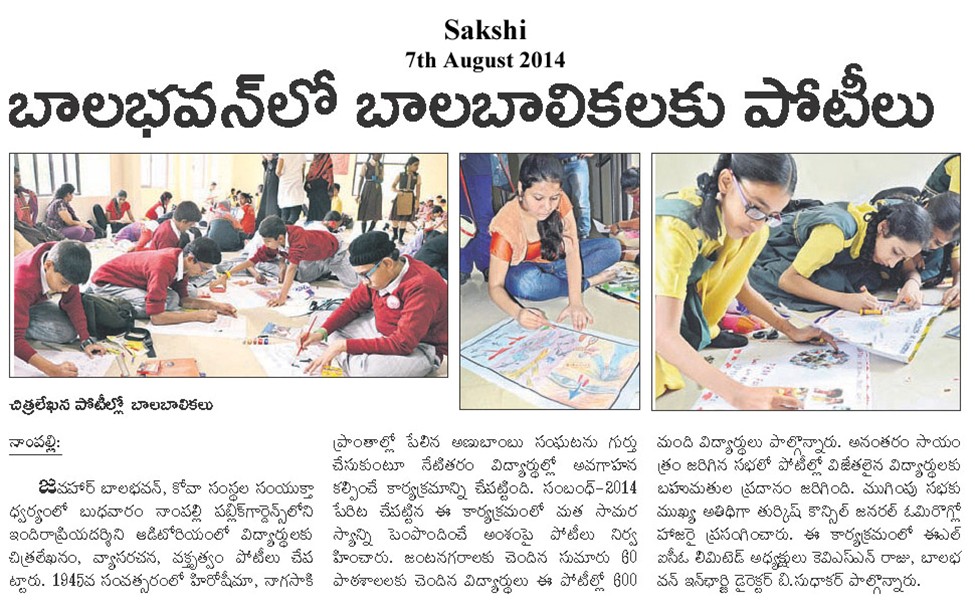
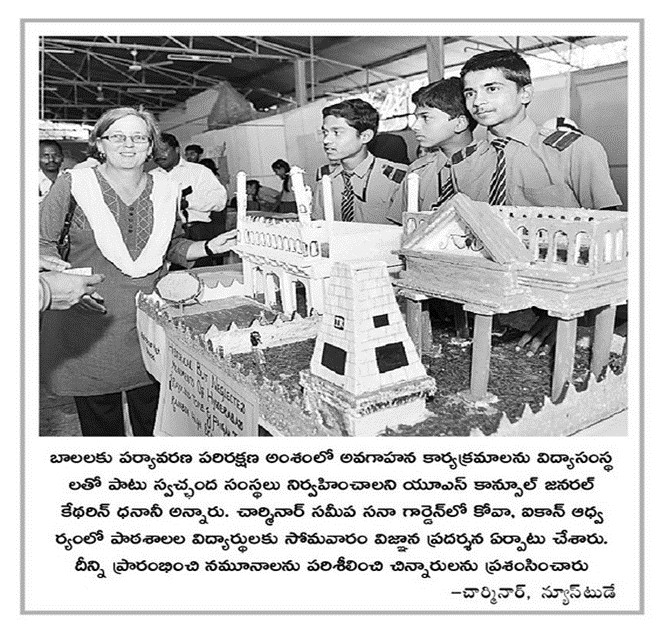
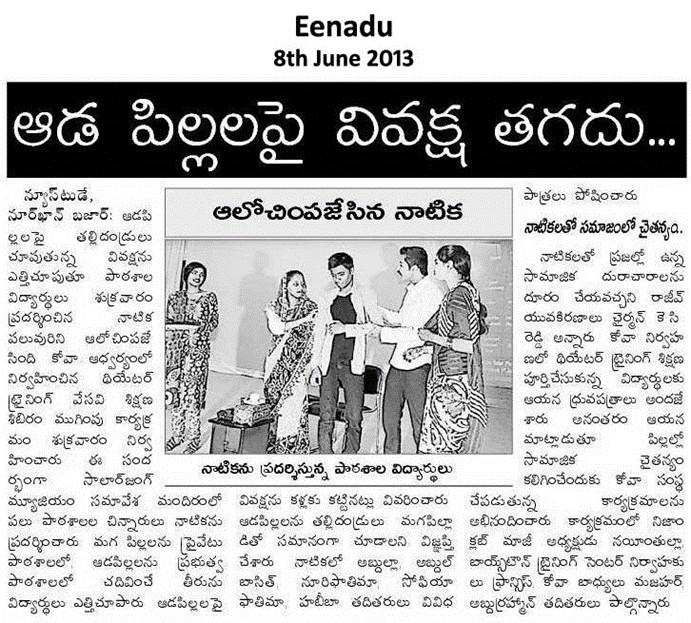
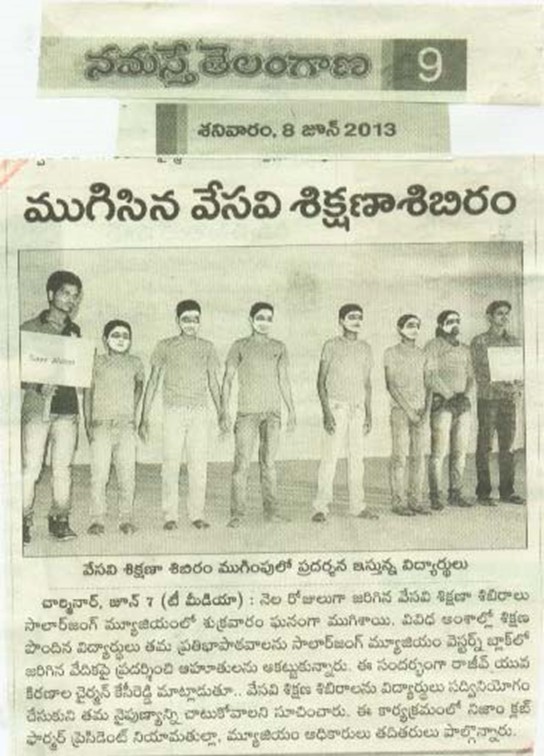
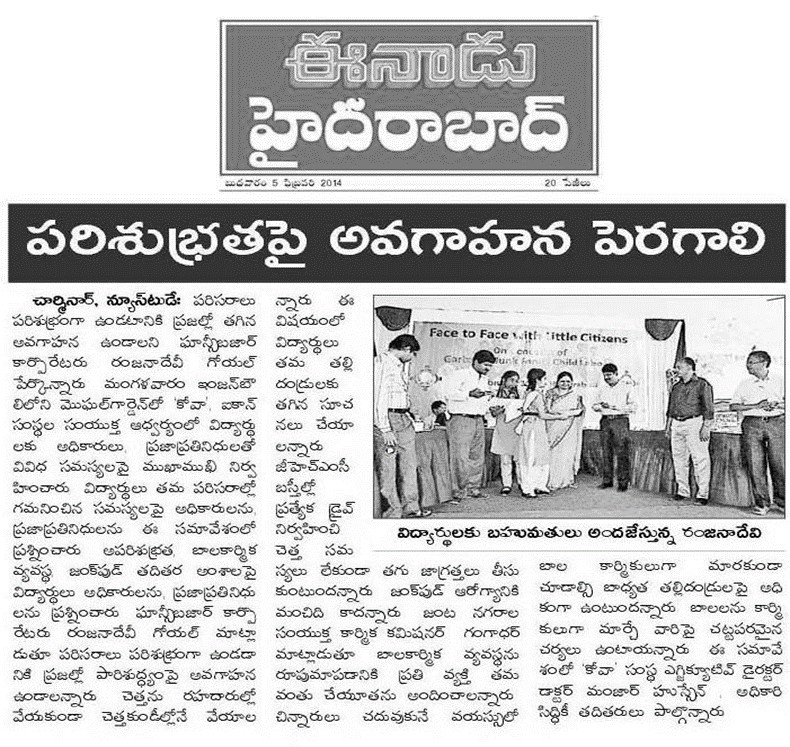
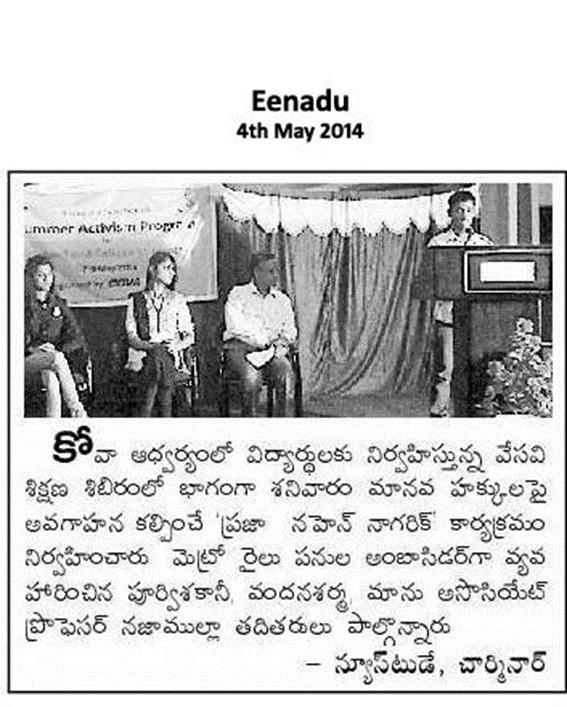
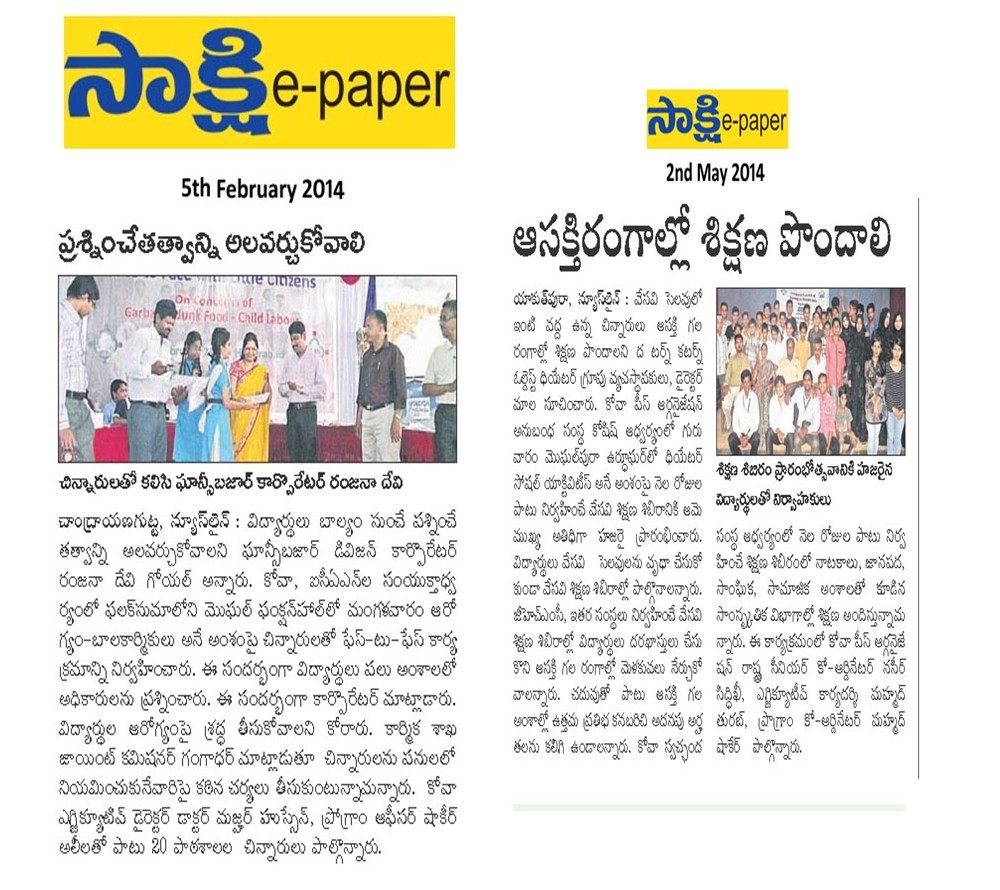
COVA- ICAN
Compassionate Citizenship and Responsible Activism Program
For School and College Students
Case Studies
1. Orientation of Little Citizens on Summer Activism
Achievement of Little Citizens: During the field visits carried out in May- June 2012, apart from many findings, students noticed that dog biting menace was rampant in some areas leading to incidences of rabies. They took up the issue as a challenge, carried out a detailed survey of the affected area and made a representation to the Chief Veterinary Officer, GHMC.
As a result, dog squads came into action immediately to catch stray dogs and the incidence of dog bites came down substantially and immediately in the affected areas making the students happy with their first success in Social Activism!! From June 2012 there will be follow up by the students on social activism on the issues of situation in government schools, hospitals and initiatives for more and improved recreation facilities.
2. Students Access Civic Services f Society as Responsible Citizens
Ghousiya Yasmeen, Tabassum Sultana, Ayesh Omar & Zaheda Kulsum, all girl students of Hyderabad Mission High School, undertook a Project Work on accessing civic services from Greater Hyderabad Municipal Corporation (GHMC) as assured by the Citizens Charter and gained understanding about the range of services offered by GHMC, time frames for delivery and modes to register complaints through use of mobile App, call centres, Facebook, email etc.



They did a field survey to identify issues and decided to file a complaint about littering and a pile of garbage lying uncleaned near their school. They downloaded the GHMC app and submitted their grievances with the department for which they received an acknowledgement detailing their complaint number, name and number of the concerned officer and the time frame within which the issue will be addressed. Consequently, GHMC cleared the garbage within 30 hours of the complaint and they received another message saying that the complaint is addressed and if they have any issues or dissatisfaction, they can reopen their complaint again.
3. Understanding the Issue of Begging and Rehabilitation
Mohd Tanveer, Owais Shaik Raof, Saahil Baig, Syed Sifaan from Grace Model School undertook a Project work on ‘Understanding the Issues of Begging: Solutions to Change their Lifestyle. The survey was conducted near school area, wherein beggar and local people were asked questions on types, issues, causes, and current living scenario of beggars.
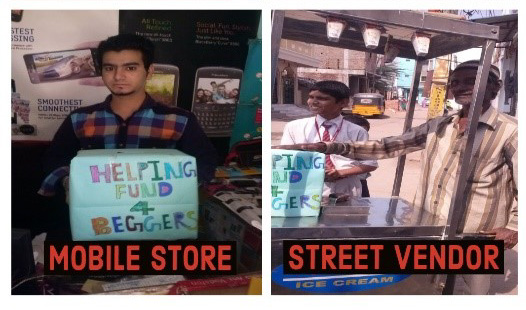
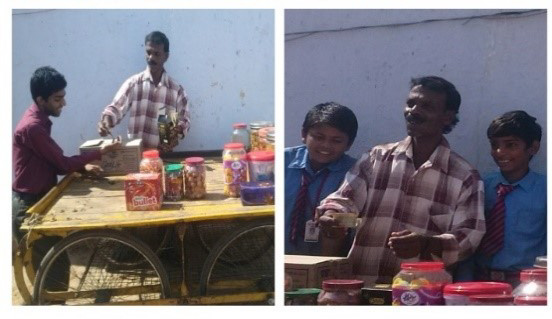

The survey results revealed that some beggars, who are other-wise physically fit, take to begging at any excuse. One such example was beggar Shiva, who has lost his fore arm and took to begging.
The students decided to try and bring change in at least one beggar’s life and convinced Shiva to start working. To help him start a business the students made a money collection box and went on a street to get donations from police stations, medical halls, mobile stores and so on. With the collected Rs. 1143. They rented a cart for Shiva along with some biscuits, sweets etc to sell. Students also took permission from their school principal to let Shiva sell in front of the school. Siva was happy and agreed to work instead of begging. The change in Shiva’s life would definitely encourage students to continue their work for social transformation in future also.
4. Topic: Government Hospitals
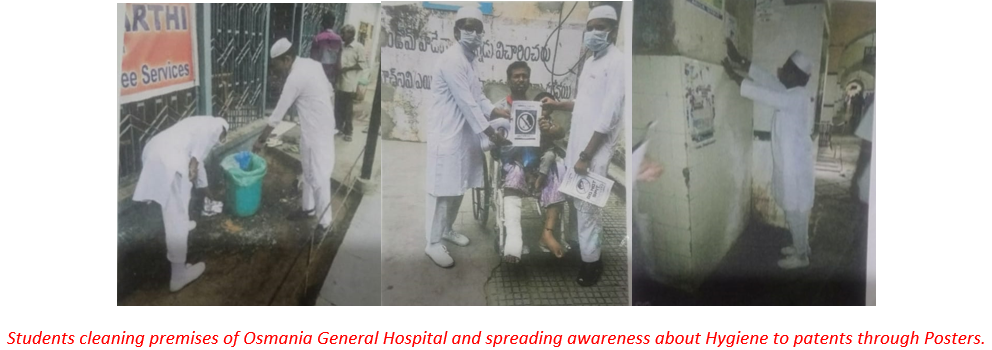
‘The action was required, and we did it with immediate effect’ say Zabiullah and Md Saifullah students from MS Creative School who participated in the 14th Project Works Program in 2018 and worked on the topic of government hospitals. The boys went to Osmania General hospital and found that the place was overcrowded and the premises very unhygienic. They also found that patients and their attendants were finding it difficult to access information about where the facilities are. This motivated the students to do something about the situation and contribute in their own little way to change.
They began with buying a couple of face masks, some bleaching powder, some floor cleaner, and dustbins. They picked up the trash in some of the common areas, cleaned the floors, put some disinfectant and put up dustbins in the area for the public to use. In order to bring in the behavioral change, they made posters on not spitting and keeping the surroundings clean and put up in the areas where there was a lot of littering and spitting. Later, they tied a couple of ropes at places that were prone to crowding to make sure people follow a Queue. The students are visiting the hospital once every week and repeat the same.
